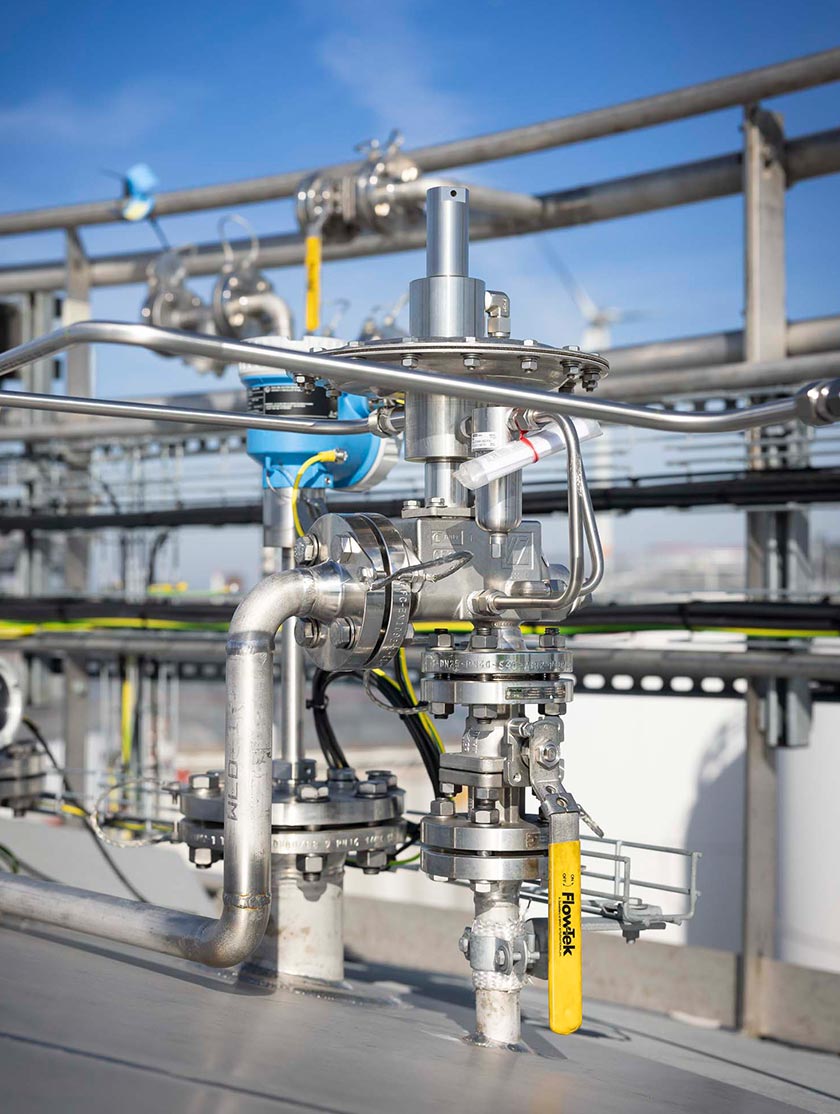Inlet and Outlet Pressure Ranges for Pressure Reducing Regulators
Understanding Inlet and Outlet Pressure Ranges
A pressure reducing regulator (also referred to as pressure regulator) is a critical component of many fluid and gas systems, designed to maintain a constant downstream pressure regardless of upstream (inlet) pressure fluctuations. Selecting a regulator with the appropriate inlet and outlet pressure ranges is critical to ensuring system safety, efficiency, and durability. This article examines the implications of these pressure ranges for the suitability of pressure reducing regulators.
Inlet Pressure Range
The inlet pressure is the maximum and minimum pressure of the liquid or gas entering the pressure reducing regulator. This range defines the pressures that the regulator can withstand and effectively regulate.
Outlet Pressure Range
The outlet pressure range refers to the regulated pressures that the pressure reducing regulator can maintain downstream. This is the target pressure that the system requires to operate safely and efficiently.
Implications of Inlet Pressure Range on Pressure Reducing Regulator Suitability
- Structural Integrity and Safety
If the inlet pressure exceeds the pressure reducing regulator's maximum inlet pressure rating, it can cause mechanical failure, creating safety hazards. Regulators are designed with pressure ratings that define the maximum allowable inlet pressure to prevent damage or rupture. - Control Stability
The pressure reducing regulator must be tuned to the expected inlet pressure range to maintain a stable outlet pressure. Wide fluctuations in inlet pressure may require a regulator designed for large inlet pressure differentials or may lead to outlet pressure instability. - Regulator Pressure Drop
The difference between inlet and outlet pressures (pressure drop) affects regulator performance. Regulators optimized for a specific inlet pressure range maintain reliable control within that range; outside this range, control may become erratic or inaccurate.
Outlet Pressure Range Implications for Pressure Reducing Regulator Suitability
- Meeting System Requirements
The outlet pressure range must be compatible with the pressure requirements of the downstream equipment. Use of a pressure reducing regulator that cannot meet the required outlet pressure may result in poor performance or system damage. - Control Accuracy and Responsiveness
The outlet pressure range determines how closely the regulator can control pressure. A regulator designed for a narrow outlet pressure range will generally provide better control accuracy, which is critical in sensitive applications. - Media Compatibility
Certain outlet pressures are necessary to maintain desired flow characteristics or to ensure safe media handling, especially with gases. A pressure reducing regulator that cannot maintain these pressures is inadequate.
Matching Inlet and Outlet Pressure Ranges for Optimal Suitability
- Verify that the maximum inlet pressure exceeds the highest anticipated inlet pressure of the system to ensure durability and safety.
- Ensure that the regulated outlet pressure range meets or exceeds the pressure requirements of the downstream equipment.
- Consider transient conditions that can cause pressure spikes or drops, selecting pressure reducing regulators with adequate safety margins.
- Consider the pressure differential (inlet pressure minus outlet pressure), as too large a difference can affect the life and performance of the pressure reducing regulator.
Summary Table: Key Pressure Ranges and Their Implications
| Pressure Range | Implications | Considerations for Suitability |
|---|---|---|
| Inlet Pressure Range |
- Defines max/min pressure the regulator can withstand - Affects structural integrity and safety - Influences control stability and pressure drop |
- Max inlet pressure rating must exceed system inlet pressure - Select for expected pressure fluctuations - Ensure appropriate pressure differential handling |
| Outlet Pressure Range |
- Defines regulated downstream pressure - Determines control accuracy and responsiveness - Impacts media flow and safety |
- Match outlet pressure range to system requirements - Choose regulator optimized for precise control - Verify compatibility with media and operating conditions |
Conclusion
Inlet and outlet pressure ranges are the main parameters that affect the suitability of a pressure reducing regulator for any application. Selecting a pressure reducing regulator with the appropriate pressure ratings ensures system safety, consistent operation, and equipment longevity. Careful consideration of these ratings, along with other factors such as flow capacity and media compatibility, allows for optimal regulator performance tailored to the specific needs of the system.
Ensure system reliability and avoid downtime with the right pressure reducing regulator. Cashco offers dependable models and expert support.
Explore all models here or complete the Regulator Sizing Form for fast and accurate guidance.
Visualize How A Pressure Reducing Regulator Operates
This animation helps you better understand internal components like the diaphragm and valve—useful for identifying potential performance issues.





